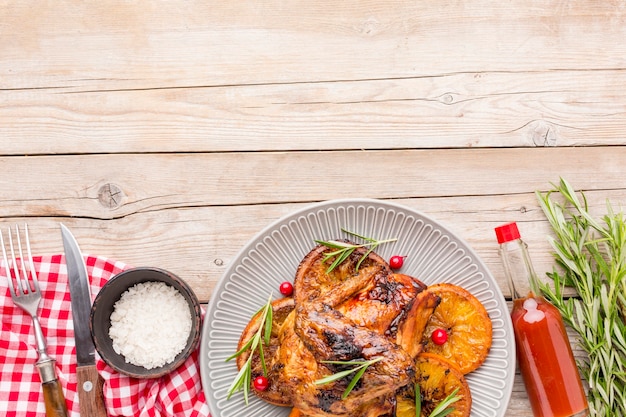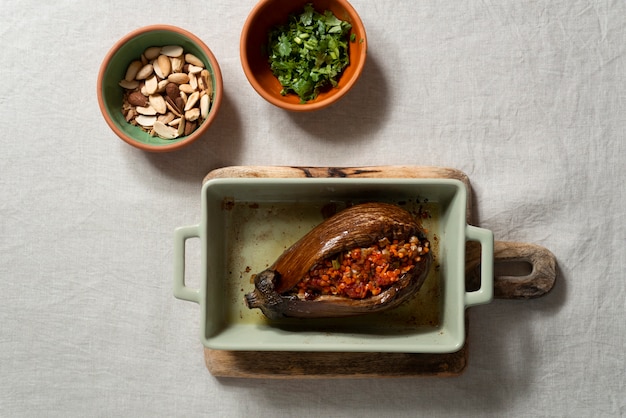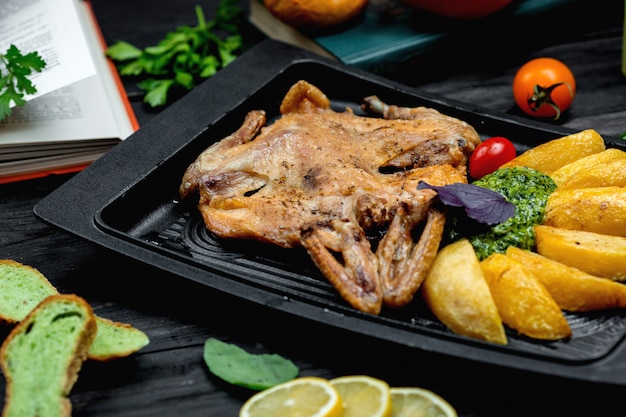Let's talk pork roasts! They're a staple in my kitchen, and I've learned a ton about getting them just right over the years. It can feel a bit intimidating at first, but with the right information and a little practice, you'll be whipping up succulent, juicy pork roasts like a pro. This guide is your go-to resource for everything pork roast, from choosing the perfect cut to mastering those cooking temperatures. I'm sharing all my tips, tricks, and even some personal anecdotes – think of it like a conversation over a delicious dinner. Ready to dive in? Let's get started!
(Part 1) choosing the right cut: The Foundation of Flavor

The first step in any great pork roast adventure is picking the right cut. This isn't just about looks – it's the foundation for your flavor. Different cuts have different cooking times and temperatures, so it's important to choose wisely. I've always had a soft spot for pork shoulder, but there are plenty of other fantastic options out there. Let's explore some of the most popular cuts.
Pork Shoulder: The Juicy Heavyweight
Ah, the pork shoulder, my personal favourite! It's a hefty cut with plenty of marbling, making it incredibly tender and flavorful. It's also a forgiving cut, meaning it can handle a bit of overcooking. I've had many a pork shoulder roast come out a tad dry, but it always tastes fantastic. It's a go-to for pulled pork, but also shines when roasted whole.
pork loin: The Lean and Versatile Performer
The pork loin is a leaner cut compared to the shoulder, and it cooks up quickly. It's perfect for roasting whole or slicing into chops. The key with the loin is to cook it to an internal temperature of 145°F (63°C), which ensures it's safe to eat. But remember, overcook it and you'll risk a dry roast. So, keep a close eye on it!
pork tenderloin: The Delicate Gem
Pork tenderloin is a small, delicate cut that cooks incredibly fast. It's ideal for grilling or pan-frying, but also holds up well when roasted. I always recommend a marinade to keep it juicy. You can cook it whole, or slice it in half lengthwise for a larger surface area. But be careful not to overcook it! It's a delicate gem, so keep a watchful eye.
(Part 2) Seasoning the Pork: Unleashing Flavor with Spice

Now, onto the fun part – seasoning the pork! This is where you get creative and experiment with different flavors. My go-to is a simple salt and pepper rub, but don't be afraid to branch out. You can add other spices like garlic powder, onion powder, paprika, or even a touch of cayenne pepper for a bit of heat. Herbs like rosemary, thyme, or sage also work wonders. And why not create your own spice blend? The possibilities are truly endless! I've even used a blend of chili powder and cumin for a Mexican-inspired twist.
(Part 3) Roasting the Pork: Transforming into a Culinary Masterpiece

Alright, here's where the magic happens. I typically preheat my oven to 325°F (163°C). I love to place my pork roast in a roasting pan with a little bit of liquid, like chicken broth or apple cider, to keep it moist. But I've also experimented with wine, water, or even just a touch of oil. Once the oven is preheated, I pop in the pork roast and let it cook for about an hour, then I check the temperature.
Cooking Times: A Guide to Perfect Timing
The cooking time for a pork roast will vary depending on the size and cut of meat. From experience, I've found that a pork shoulder takes about 20 to 30 minutes per pound, while a pork loin typically takes 15 to 20 minutes per pound. But always, always rely on a meat thermometer to check the internal temperature. It's the key to ensuring your pork is cooked through.
Internal Temperature: The Gold Standard for Safety and Flavor
Here's where the golden rule comes in. The USDA recommends cooking pork to an internal temperature of 145°F (63°C). This is the temperature that guarantees your pork is safe to eat. I've found that letting it rest for 10 minutes after cooking allows the internal temperature to rise a few degrees, resulting in a more flavorful and juicy roast. Trust me, it's a game-changer!
(Part 4) Resting the Pork: Allowing Flavors to Bloom
After your pork roast hits the desired internal temperature, it's crucial to let it rest for 10 to 15 minutes before carving. Think of this as a chance for the juices to redistribute throughout the meat, leading to a more tender and flavorful roast. During this rest period, I usually cover it loosely with foil to keep it warm and cozy.
(Part 5) Carving the Pork: Unveiling the Culinary Masterpiece
Now comes the fun part. Carving the pork roast is a satisfying experience, almost like revealing a culinary masterpiece. I prefer to use a sharp carving knife and a cutting board. I usually start by carving the roast in thin slices, which makes it easier to serve. Remember to slice against the grain for the most tender meat.
(Part 6) Serving the Pork: Creating a Feast for the Senses
Finally, the moment of truth! The pork roast is ready to be served. I love to pair it with roasted vegetables like carrots, potatoes, and onions. It also sings with a side of mashed potatoes, gravy, and a nice green salad. Or you can simply enjoy it with a side of bread and a glass of wine. It's all about your personal preferences. I've even been known to serve it with a dollop of apple sauce. It's a classic combination that never fails to please.
(Part 7) Leftovers: Second-Day Delights
You know what I always look forward to? Pork roast leftovers. The next day, I'll slice up some of the leftover roast and make delicious sandwiches. Or I'll whip up a hearty pork roast hash. I've even used leftover pork to make a soul-warming soup or stew. The possibilities are endless!
(Part 8) pork roast tips and Tricks: Mastering the Art of the Roast
Here's a few extra tips and tricks to help you on your pork roast journey:
- Don't Overcook It: Pork can become dry if it's overcooked. It's important to check the internal temperature of the meat using a meat thermometer to make sure it's cooked through but not dry. Remember, a little pink is okay!
- Use a Roasting Rack: Using a roasting rack allows air to circulate around the pork roast, which helps to cook it more evenly. You can place it over a baking sheet to catch any drippings.
- Baste the Pork: Basting the pork roast with pan juices helps to keep it moist and flavorful. You can also use a glaze made with honey, maple syrup, or even barbecue sauce. Just make sure to add it towards the end of cooking to prevent burning.
- Rest the Pork: Letting the pork roast rest for 10 to 15 minutes after it's cooked allows the juices to redistribute throughout the meat, resulting in a more tender and flavorful roast.
- Don't Be Afraid to Experiment: I encourage you to experiment with different seasonings and techniques to find your own personal favorites. The kitchen is your playground!
(Part 9) Pork Roast Cooking Temperatures Chart: Your Quick Reference Guide
To make sure you get the perfect pork roast, check out this handy table that summarizes the cooking temperatures and times for different cuts of pork:
| Cut of Pork | Internal Temperature (°F) | Internal Temperature (°C) | Cooking Time (per pound) |
|---|---|---|---|
| Pork Shoulder | 145 | 63 | 20-30 minutes |
| Pork Loin | 145 | 63 | 15-20 minutes |
| Pork Tenderloin | 145 | 63 | 10-15 minutes |
(Part 10) FAQs: Answering Your Pork Roast Questions
Got questions? No worries, I've got you covered. Here are some frequently asked questions about cooking pork roasts:
1. Can I cook a pork roast in a slow cooker?
Yes, absolutely! slow cooking is a fantastic way to make a super tender and juicy pork roast. Just be sure to cook it on low heat for 6 to 8 hours or on high heat for 3 to 4 hours, until it reaches an internal temperature of 145°F (63°C). You can also use a slow cooker to make pulled pork by shredding the pork after it's cooked. I've used my slow cooker to make a pork shoulder roast for pulled pork sandwiches, and it turned out absolutely amazing. It's a set-it-and-forget-it kind of meal.
2. What happens if I overcook a pork roast?
Overcooking a pork roast can lead to dry and tough meat. If you accidentally overcook it, it's not the end of the world. You can try to salvage it by adding some liquid and cooking it for a longer period of time on low heat. This will help to rehydrate the meat. I've also added a bit of stock to a dry pork roast and let it simmer for a while. It worked like a charm. You can also try slicing it thinly and using it in a stew or other dish to add flavor.
3. Can I freeze a pork roast?
Yes, you can definitely freeze a pork roast. It's a great way to have a meal ready to go for a later date. Just wrap it tightly in plastic wrap and then in aluminum foil, and place it in the freezer. It will last for 3 to 4 months in the freezer. I often freeze pork roasts when I have leftovers or if I'm planning a meal ahead of time. Just remember to thaw it in the refrigerator for a day or two before cooking.
4. What are some good side dishes for pork roast?
There are so many amazing side dishes that pair well with pork roast! Some of my favorites include mashed potatoes, roasted vegetables (carrots, potatoes, onions), sweet potatoes, green beans, applesauce, and cranberry sauce. You can't go wrong with a classic combination of roasted vegetables and mashed potatoes, or you can get creative with your side dishes and try something new. I've even served a pork roast with a side of couscous and a Mediterranean salad. It was a huge hit!
5. How can I tell if a pork roast is done?
The best way to tell if a pork roast is done is to use a meat thermometer. Insert the thermometer into the thickest part of the roast, making sure it doesn't touch bone. The internal temperature should reach 145°F (63°C). If you don't have a meat thermometer, you can also check for doneness by poking the roast with a fork. If the juices run clear, the pork is cooked through. You can also check the color of the meat. If it's no longer pink, it's probably done. But always err on the side of caution and use a thermometer if you have one!
I hope this guide has helped you feel more confident about cooking pork roasts. Now get out there and give it a go! You won't regret it. Trust me, it's a delicious and rewarding dish to master. Happy cooking!
Everyone is watching

How to Cook Frozen Lobster Tails Perfectly: A Step-by-Step Guide
RecipesLobster. Just the word conjures up images of lavish meals, special occasions, and a taste of luxury. But let's...

Pigs in a Blanket Cooking Time: How Long to Bake for Perfect Results
RecipesAh, pigs in a blanket. Just the name conjures up images of those delightful little parcels of crispy pastry en...

Pork Fillet Cooking Time: How Long to Cook It Perfectly
RecipesPork fillet, or tenderloin as it's sometimes called, is a real favourite in our house. It's so versatile, and...

The Ultimate Guide to Tender, Juicy Pulled Pork
RecipesRight, let's talk pulled pork. It's one of those dishes that just screams "comfort food," doesn't it? I mean...

The Ultimate Guide to Cooking Sweet Potatoes: From Roasting to Mashing
RecipesSweet potatoes. Just the name conjures up images of warm, comforting dishes, bursts of vibrant color, and a to...
